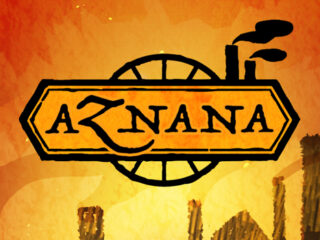 One of the fun side-effects of Einstein’s theory of general relativity is that by playing with space, we can bend and alter time. A case in point would be the space strategy MMO Vega Conflict: I managed to lose about twelve hours of my life in the blackness of its airless void. And in the interests of saving time, readers, I will tell you now that those hours were pretty mixed.
One of the fun side-effects of Einstein’s theory of general relativity is that by playing with space, we can bend and alter time. A case in point would be the space strategy MMO Vega Conflict: I managed to lose about twelve hours of my life in the blackness of its airless void. And in the interests of saving time, readers, I will tell you now that those hours were pretty mixed.
Because time is definitely a thing you can save in Vega Conflict. Some of this time-saving is interesting: you can learn how to use its rather lovely real-time strategy mechanics, sending your fleet out to raid AI cargo fleets or battle other players in high orbit around distant planets. And when you do get into a scrap, you can learn to tap and drag your ships to maneuver while you plink away at enemies from range, or box foes into a tight area while you lather them with area-of-effect weapons. Then again, you can learn about the genuinely interesting different ways you can outfit your ships, optimizing them to cope with different sorts of enemies or tactical situations. Do you plan to build a fleet that is all about rushing the enemy up close and dealing massive damage, a fleet that strafes quickly around your enemy’s slow-turning heavy-hitters, or one that whittles away your enemy’s hulls as they try to chase you? If you have the right fleet for the right battle, you can save yourself hours of waiting as your damaged ships undergo repairs.
On the other hand, you can save yourself time in Vega Conflict in some very, very, predictable ways. I mean, of course, by resorting to In-App Purchases, the thing that every free MMO in the universe seems to offer as a means of converting less money (in your bank account) into less time (spent waiting for in-game tasks to complete). Time is money, and nowhere is that more obvious than in Vega Conflict’s base-building and tech-researching gameplay. Your first upgrades and research will be short and sweet, as the game offers the neat feature of allowing you to rush any task of less than five minutes’ duration. But if you’d like to hurry anything that would take more than five minutes to complete, then son, you are out of luck: you’ll need to hand over some gold, which is available for cash from the in-game shop and pretty much nowhere else. This wouldn’t be so bad, except that there’s a very noticeable and rapid upswing in the amount of time (and thus also gold) it takes to complete higher level tasks. As soon as you start to encroach on the mid-game levels of weaponry, base buildings, or ship designs, the game starts to ask you to wait first hours to make these new toys available to you, then days. It can take almost a week to construct a top-tier battleship – and a serious high-level player might need perhaps six fleets of them, of six ships each. It’s not vastly different from the other browser-based, Android, and IOS MMOs out there in this respect, but the sudden onset of these waits and their cash equivalents felt jarring.
Now, I have no problem with In-App-Purchases, and I understand that MMOs in particular need ways of eliciting continuing support from their playerbases. But when a game breaks its progression in this way, or places what feels like an artificial brake on it to increase players’ need to use real money, I go and I hover my finger over the big red button we have here at the Hardcore Droid offices, the one marked ‘Pay to Win’. And when it looks like one player can use cash to leap ahead of their neighbors in tech, or throw damaged fleets right back into the meatgrinder to turn an otherwise tense Player-versus-Player battle – I have to think very hard about pressing that button.
With these serious thoughts in mind, I sounded my battlecry (‘For Science!’) and duly bought a modest amount of in-game currency. And boy, did it speed things up, especially as the game threw in some free ships that were considerably better than anything I could build at the time. Moreover, by spending even a small amount of cash wisely, I was able to make a beeline for some key early weapons technologies that quickly gave me an edge in fleet-to-fleet combat, and allowed me to roll through the bases of players I’d previously struggled to scratch. It wasn’t a huge boost to my combat power, but it was certainly an edge; while the game tries to stop players from exploiting that edge by preventing players of disparate ‘levels’ from fighting, I found that this made little difference when I started using cash to return damaged fleets to the fight instantly, tipping the scales with a judicious use of attrition.
As a result, I can’t say that I’m satisfied with how Vega Conflict handles its real-money economy, and indeed its economy in general. The arbitrarily long waits for the game to progress soon became the only thing I was grappling with, while the other resources in the game rapidly dwindled into the ‘chump change’ category. I could scoop up those resources by the squillion through raiding AI cargo fleets, especially if I was prepared to spend some time directing my piratical battles in person – though as the fights got more repetitive I did so less and less. Only time seemed to matter, as an engaging first experience with Vega Conflict’s simple but tactically nuanced combat and its meticulous graphical feel transformed into a wait for the next part of the game to make itself available. Whatever the reason, I ended my time with this game shaking my head sadly over the many things it could have done to make its progression appear meaningful, or to make the most of its truly engaging features. And let’s be clear here: it could have cut out some of the numerous arbitrary bottlenecks that slow the game down, allowing players to repair multiple fleets or upgrade multiple base buildings simultaneously. It could have widened the scope of its economy, allowing players to invest in production capacity and other strategic assets, or allowing them to trade other in-game resources for gold. It could even have developed its PvE gameplay to the point where players had a reason to keep playing while they waited for the next piece of the game to unlock.
Instead, Vega Conflict decided that it was going to take a lot of time over things. And in a completely unrelated business move, it also decided that money was going to equal time. General relativity or not, readers, I’m pretty sure you wouldn’t need me to tell you not to waste money; when it comes to Vega Conflict, as Einstein said, you do the math.
Is it Hardcore?
Only for the determined.
A well-presented MMO with clever and nuanced strategy elements, Vega Conflict is let down by its poorly-paced progression and its one-dimensional economy. Dedicated, patient, and above all, rich, players will find a solid game under these flaws, though in places its in-app-purchases cross the red line of becoming outright pay-to-win. You have been warned.




























